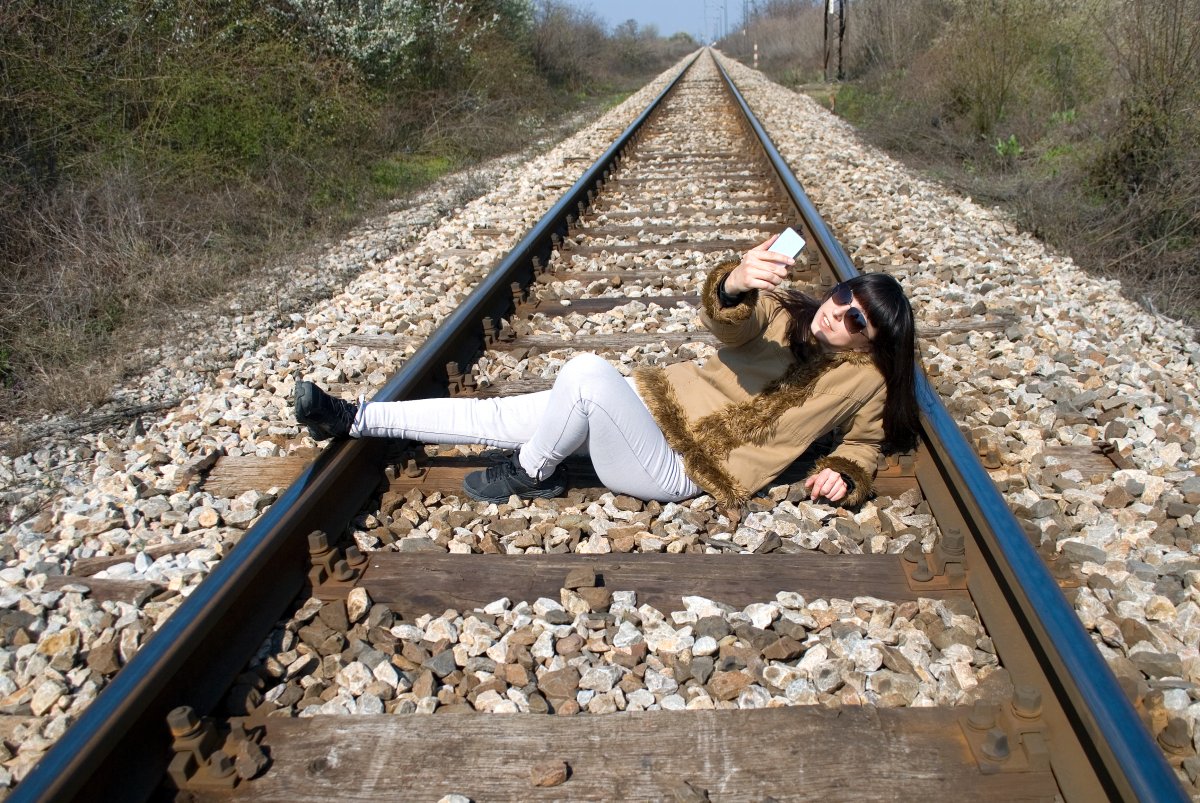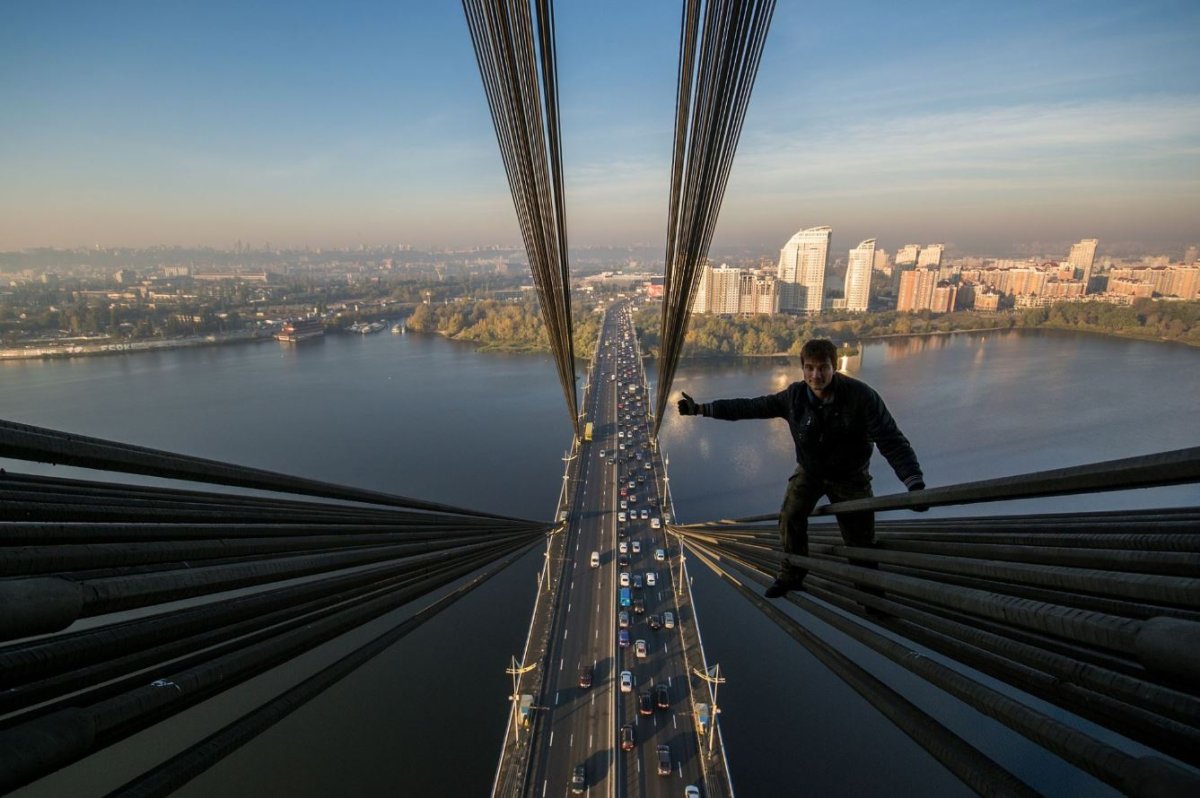As people up the ante with their social media and selfie game, selfie takers are willing to do just about anything to get the perfect photo – even if it means risking their lives for their 15 minutes of social media fame.

Since 2014, there have been 127 reported incidents where people died taking a selfie in a dangerous situation or place. So far, 2016 has been the deadliest on record with 73 reported deaths.
But now a team of computer science experts from Carnegie Mellon University believe they have found a way to prevent selfie deaths from happening.
After noticing a slew of news reports in the summer of 2015 about the phenomenon, Ponnurangam Kumaraguru of the Indraprastha Institute of Information Technology and his colleagues decided to come up with a solution.
READ MORE: Woman taking topless selfie while driving slams vehicle into cop car, gets arrested
According to the team’s research, there were 15 reported deaths in 2014 and 39 in 2015. In fact, the number of reported selfie deaths in 2015 was more than the number of deaths due to shark attacks (there were six according to National Geographic).
So Kumaraguru and his team are developing a software that will warn users when they are in risky places, or have the camera function on the phone turn off if the situation looks too dangerous.
The team is also collecting information on where selfie deaths took place and will use it to create an algorithm for risk.
- Canada’s income gap is growing. Will Budget 2024 help affordability?
- Shoppers faces proposed class action over claims company is ‘abusive’ to pharmacists
- Ontario premier calls cost of gas ‘absolutely disgusting,’ raises price-gouging concerns
- What’s going on with the Cybertruck? Tesla seems to have halted deliveries
“Given the influence of selfies and the significant rise in the number of deaths and injuries reported when users are taking selfies, it is important to study these incidents in detail and move toward developing a technology which can help reduce the number of selfie casualties,” the report reads.
The team plans to have the software completed by the middle or end of Jan. 2017.
Selfie deaths by the numbers
According to the report, 76 selfie deaths occurred in India which accounts for the majority of incidents. This is followed by Pakistan with nine, the U.S. with eight and Russia with six.
In fact, dangerous selfie taking has become such an issue in India that Mumbai police have designed 16 “no selfie zones” in the city earlier this year. Most of these zones are located along the coastline where there are no railings or barriers in place. Anyone caught taking selfies in the prohibited areas can receive a find of 1,200 rupees (or about $18).
Four deaths have also occurred in the Philippines and China, three in Spain, two in Indonesia/Portugal/Peru/Turkey and one in Romania/Australia/Mexico/South Africa/Italy/Serbia/Chile/Nepal/Hong Kong.
Of the 127 deaths, 41 victims were less than 20 years of age, 45 were between 20 and 24 years of age and 17 were 30 years or older.
The majority of deaths were related to height (32 deaths) and water hazards (27 deaths) or a combination of both (27 deaths). Selfie deaths involving trains accounted for 15 deaths, weapons eight deaths, vehicles seven deaths, electricity six and animals five.
And while a previous SelfieCity study shows that women take more selfies, Kumaraguru and his team found that men were more prone to taking dangerous selfies and accounted for around 76 per cent of those who died in selfie deaths.
What’s the appeal of taking selfies?
Is it the rush? Is it bragging rights?
One 2015 study out of Ohio State University seems to think so after researchers concluded that men who posted more photos of themselves online scored high on traits of narcissism and psychopathy. And while the study didn’t look at women, researchers were confident the same applied to them. They intend to confirm their hypothesis in a follow-up study.
But one psychology professor thinks the act could be tied to something called “social comparison,” a concept in which people tend to compare themselves with others online and try to outdo others by showing pictures that depict their life as more interesting.
READ MORE: Woman defies death for her collection of selfies on Instagram
“There is this general phenomenon where we raise the bar for ourselves of what would be a fun selfie to take and share with others,” Krizan told LiveScience. “Nobody wants to be outdone.”
She also adds that as the standard of what people find impressive goes up, it may inspire others to engage in risky activities to take their selfie one step further.
But how popular are these types of selfies anyways? According to Kumaraguru, very.
“There are these hashtags #dangerousselfie and #extremeselfie that we have seen and they are popular,” he says. “People compete to take dangerous selfies and they get traction.”
Some dangerous examples
In Jan. 2015, three Indian college students between 20 and 22 years old were hit by a train while attempting to take a selfie as close to a moving train as possible. A fourth friend, who survived the incident, told police that the train had knocked his friends down, killing them instantly before they could jump off the track, The Times of India reports.
That same month, two Russian soldiers posed with a live grenade. The grenade detonated unexpectedly and killed them both, according to Time.
One latest example is of 15-year-old Ramandeep Singh, a teen from in Pathankot city in the Punjab state, who died while taking a selfie with a loaded gun. Singh accidentally hit the trigger and shot himself in the head.
Some adrenaline junkies, however, continue to take their selfies to new heights and dangerous places.
Yaroslav Seheda is a Russian daredevil known for knee-weakening photos of him in elevated and dangerous places. He’s photographed himself on the tips of the tallest buildings and balancing on the wires of big city bridges, just to name a few.
British man James Kingston has become famous for YouTube videos that show him climbing buildings and other structures around the world. In his latest video, Kingston climbs the Almas Tower in Dubai.
Another British man, Lee Thompson, has gone to great heights for his perfect selfie as well when he climbed the top of the Christ the Redeemer statue in Rio de Janeiro, Brazil which can be seen in his video below.
Be smart about your selfies
In 2015, Russian police launched a campaign that urged people to take safer selfies after a string of selfie accidents and deaths in the country dominated headlines.
Among them were warnings against taking selfies with weapons, near cliffs, on top of buildings, in the water, near animals and moving vehicles, among others. It may seem like common sense, but the incidents toll continued to rise.
“Unfortunately we have noted recently that the number of accidents caused by lovers of self-photography is constantly increasing,” Yelena Alexeyeva, an aide to the interior Russian minister told The Guardian. “Since the beginning of the year we are talking about some hundreds cases of injuries for sure.”
Just like the teen in Pathankot city in Punjab state who died from a gunshot wound after posing for a selfie with a loaded gun in May, and the three Indian college students who were hit by a train in Jan. 2015 as reported by Time Magazine, the number of incidences of death by selfies continues to rise.





Comments